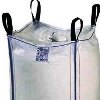| Anmol Chemicals is the pioneer manufacturers of Lithium Carbonate, Pharmaceutical Excipients Chemicals in India. We offer Halal and Kosher Lithium Carbonate made in an ISO9001, ISO22000 (FSSC22000) and cGMP certified facility. Our group has several manufacturing facilities spread across the world, supported by toll manufacturers and representatives in UAE, Europe, Africa, USA, China and has several associated manufacturing facilities spread across India. All the Information on Physics, Chemistry, Applications, Uses and Technology on Manufacture of Lithium Carbonate is in these pages. |
| The units have one or more of the certifications like FDA GMP, ISO 9001, ISO 22000, HACCP, REACH, Kosher & Halal |





Lithium Carbonate USP BP Ph Eur Grade Manufacturers
For MSDS Sheet Click
Lithium Carbonate USP BP Ph Eur SDS GHS MSDS Sheet of Manufacturers
Lithium Carbonate
BP Ph. Eur. USP Grade

Lithium Carbonate USP Grade Specifications
Li2CO3 --- 73.89
Carbonic acid, dilithium salt.
Dilithium carbonate -- [CAS 554-13-2].
Lithium Carbonate contains not less than 99.0 percent of Li2CO3, calculated on the dried basis.
Identification:A: It effervesces upon the addition of an acid, yielding a colorless gas which, when passed into calcium hydroxide, immediately causes a white precipitate to form.
B: When moistened with hydrochloric acid, it imparts an intense crimson color to a nonluminous flame.
Reaction: A saturated solution is alkaline to litmus.
Loss on drying: Dry it at 200 for 4 hours: it loses not more than 1.0% of its weight.
Insoluble substances: Transfer 10 g to a 250-mL beaker, add 50 mL of water, then add slowly 50 mL of 6 N hydrochloric acid. Cover with a watch glass, and boil the solution for 1 hour. Filter the solution through a dried, tared filtering crucible fitted with a glass-fiber filter disk, using suction. Wash the filter with hot water until the last washing is free from chloride when tested with. Dry the crucible in an oven at 110 for 1 hour: the weight of the residue is not more than 0.02% of the weight of Lithium Carbonate taken.
Chloride: To 500 mg of it add 1.2 mL of nitric acid, dilute with water to 50 mL, and add 1 mL of silver nitrate any turbidity formed is not greater than that produced in a similarly treated control solution containing 0.50 mL of 0.020 N hydrochloric acid (0.07%).
Sulfate: Dissolve 1.0 g in 10 mL of 3 N hydrochloric acid, dilute with water to 40 mL, and add 1 mL of barium chloride. Prepare a standard solution of equal volume containing 1.0 mL of 0.020 N sulfuric acid, 1 mL of 3 N hydrochloric acid, and 1 mL of barium chloride. The turbidity produced in the test solution, after 3 minutes, is not greater than that produced in the standard solution (0.1%).
Aluminum and iron: Dissolve 500 mg in 10 mL of water by the dropwise addition, with agitation, of hydrochloric acid. Boil the solution, then cool it, and to 5 mL of the solution add 6 N ammonium hydroxide until the reaction is alkaline: no turbidity or precipitate is observed.
Calcium: Suspend 5.0 g in 50 mL of water, and add a slight excess of 3 N hydrochloric acid. Boil the clear solution to expel carbon dioxide, add 5 mL of ammonium oxalate, render alkaline with 6 N ammonium hydroxide, and allow to stand for 4 hours. Filter through a filtering crucible, and wash with warm water until the last washing yields no turbidity with calcium chloride. Place the crucible in a beaker, cover it with water, add 3 mL of sulfuric acid, heat to 70 , and titrate with 0.10 N potassium permanganate to a pale pink color that persists for 30 seconds. Not more than 3.76 mL of 0.10 N potassium permanganate is consumed (0.15%).
Sodium: the sodium limit is 0.1%.
Heavy metals: the limit is 0.002%.
Lithium Carbonate BP Grade Specifications
Ph Eur
Li2CO3 --- 73.9 --- 554-13-2
DEFINITION
Content: 98.5 per cent to 100.5 per cent.
CHARACTERS
Appearance: White or almost white powder.
Solubility: Slightly soluble in water, practically insoluble in ethanol (96 per cent).
IDENTIFICATION
A. When moistened with hydrochloric acid, it gives a red colour to a non-luminous flame.
B. Dissolve 0.2 g in 1 ml of hydrochloric acid. Evaporate to dryness on a water-bath. The residue dissolves in 3 ml of ethanol (96 per cent).
C. It gives the reaction of carbonates.
TESTS
Solution S: Suspend 10.0 g in 30 ml of distilled water and dissolve by the addition of 22 ml of nitric acid. Add dilute sodium hydroxide solution until the solution is neutral and dilute to 100 ml with distilled water.
Appearance of solution: Solution S is clear and colourless.
Chlorides: Maximum 200 ppm.
Sulphates: Maximum 200 ppm.
Arsenic: Maximum 2 ppm, determined on 0.5 g.
Calcium: Maximum 200 ppm.
Iron: Maximum 20 ppm.
Magnesium: Maximum 150 ppm.
Potassium: Maximum 300 ppm.
Sodium: Maximum 300 ppm.
Lithium Carbonate BP Ph Eur USP Grade Manufacturers:
Anmol Chemicals
S-8, SARIFA MANSION, 2ND FLANK ROAD, CHINCHBUNDER, MUMBAI 400009, INDIA
TEL: (OFFICE) 91-22-23770100, 23726950, 23774610, 23723564. FAX: 91-22-23728264
e-mail: anmolc@mtnl.net.in

Exports to USA, Canada, UAE, Dubai, South Africa, Tanzania, Kenya, Nigeria, Egypt, Uganda, Turkey, Mexico, Brazil, Chile, Argentina, Europe Netherlands, Italy, Spain, Germany, Portugal, France, Malaysia, Indonesia, Thailand, Korea, Vietnam, Japan, etc.
Copyright and Usual Disclaimer is Applicable 28 December, 2021